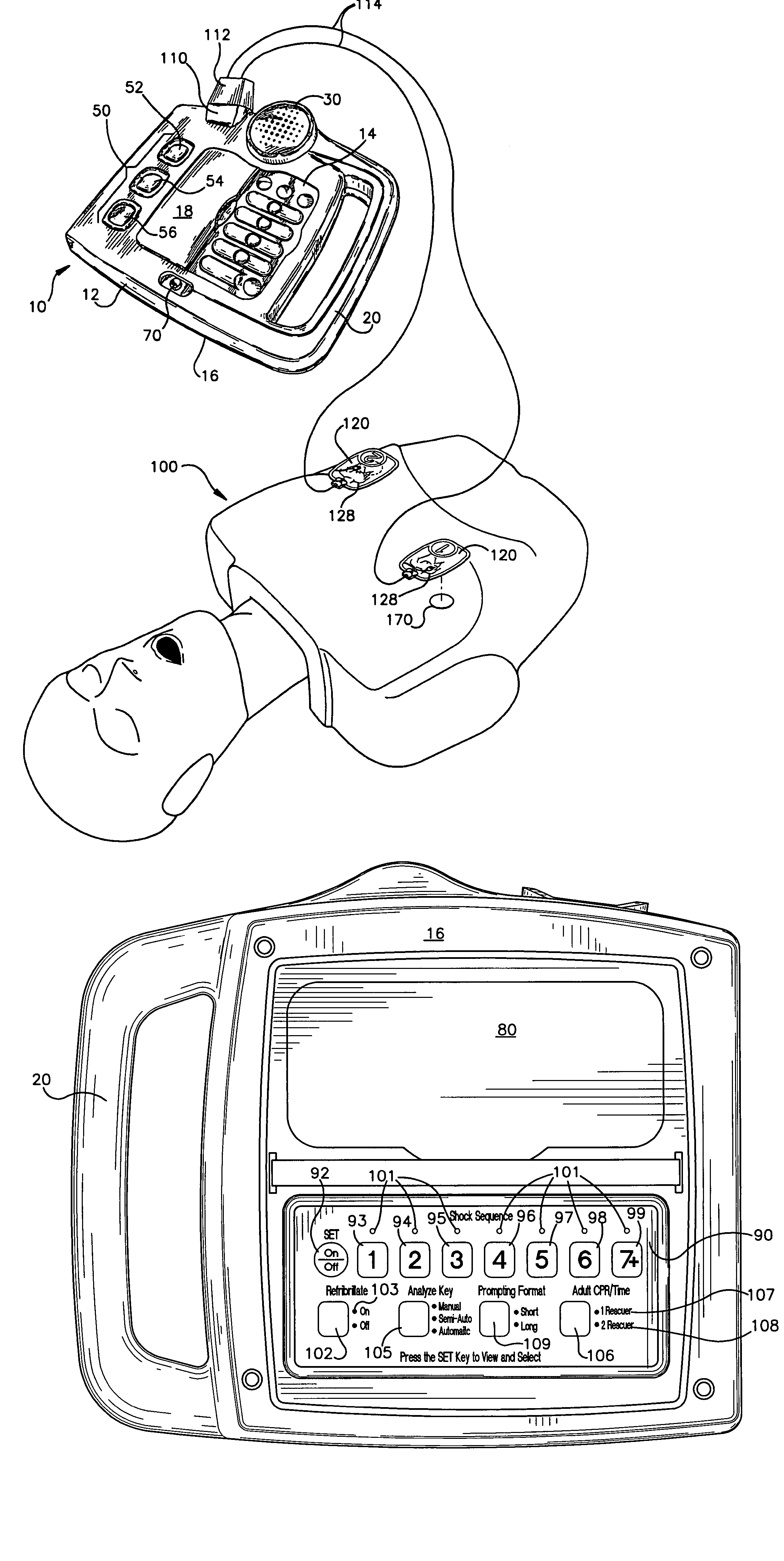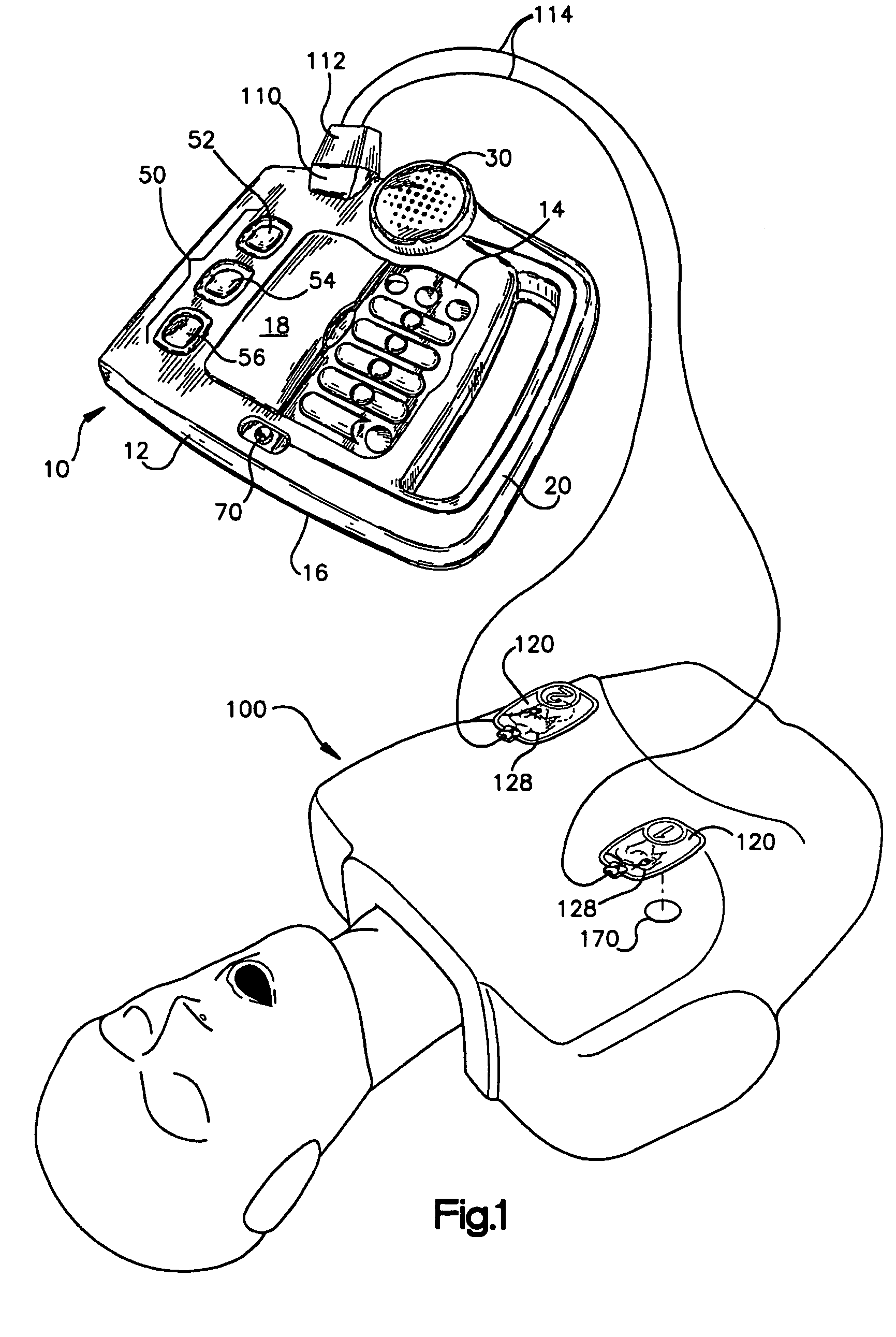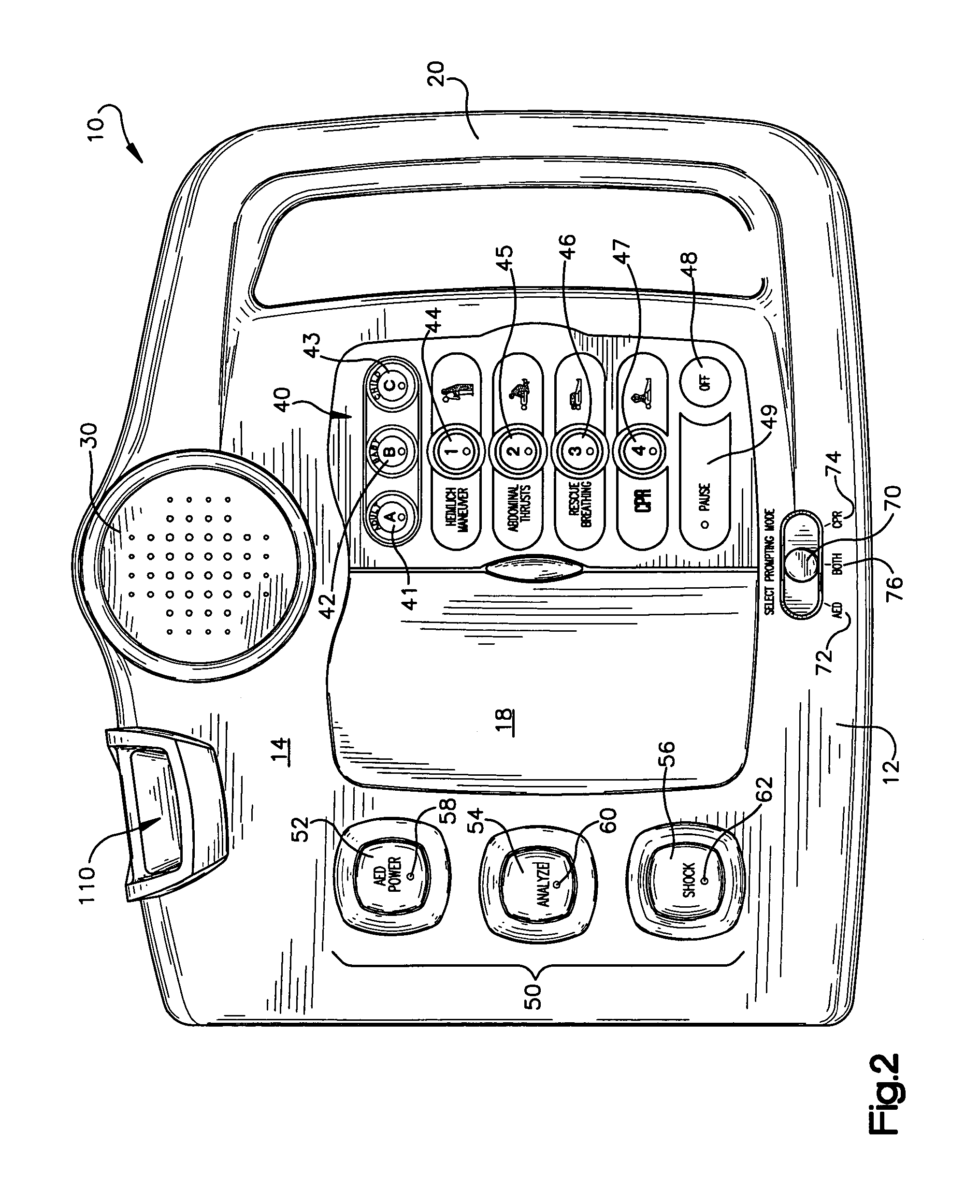Programmable AED-CPR training device
a training device and aedcpr technology, applied in the field of training devices, can solve the problems of unintended potent electric shock, high cost of devices, and often needing separate devices to provide the full range of training,
- Summary
- Abstract
- Description
- Claims
- Application Information
AI Technical Summary
Benefits of technology
Problems solved by technology
Method used
Image
Examples
Embodiment Construction
[0016]Mechanical System
[0017]Referring initially to FIGS. 1–3, a CPR-AED training device 10 of the present invention is shown. The device 10 prompts trainees with instructions on the proper sequence of steps of CPR and defibrillation in a non-emergency setting, with input information from the trainee to the device 10. With respect to the defibrillation prompting, the device 10 allows a trainee to evaluate simulated patient electrocardiogram (ECG) signals and perform simulated defibrillation with or without CPR prompting. As shown in FIG. 1, the device 10 may be used alone or in conjunction with a manikin 100 or other means for simulating a victim. The CPR-AED training device 10 comprises a body 12 having a front panel 14 and a rear panel 16, a cover plate 18, and carrying handle 20. The training device 10 further comprises an audio speaker 30 with volume control (not shown) for audibly prompting a trainee in rescue operations. The cover plate 18 is slidably mounted within grooves (n...
PUM
 Login to View More
Login to View More Abstract
Description
Claims
Application Information
 Login to View More
Login to View More - R&D
- Intellectual Property
- Life Sciences
- Materials
- Tech Scout
- Unparalleled Data Quality
- Higher Quality Content
- 60% Fewer Hallucinations
Browse by: Latest US Patents, China's latest patents, Technical Efficacy Thesaurus, Application Domain, Technology Topic, Popular Technical Reports.
© 2025 PatSnap. All rights reserved.Legal|Privacy policy|Modern Slavery Act Transparency Statement|Sitemap|About US| Contact US: help@patsnap.com



